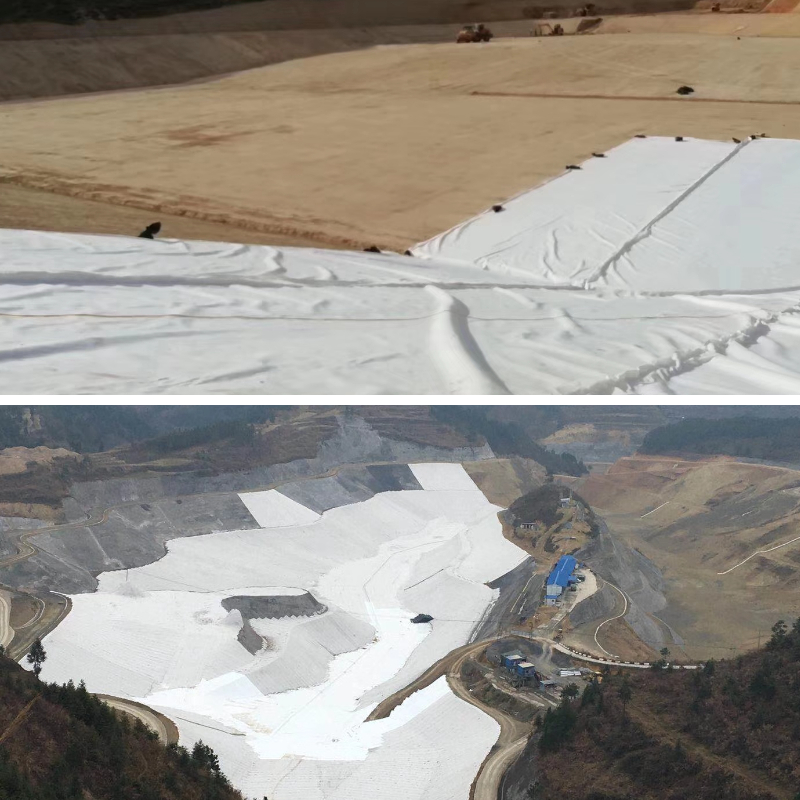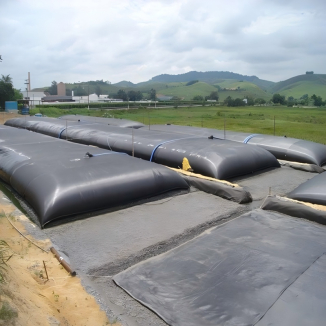Choosing the Right Geofabric Weight and Thickness for Your Project
Selecting the right geotextile is a vital choice that without delay influences the success, longevity, and cost-effectiveness of your project. While grasp its functions—separation, filtration, drainage, reinforcement, and protection—is essential, the subsequent step is selecting the proper bodily properties. Two of the most essential specs are weight and thickness. Getting these incorrect can lead to untimely failure, whether or not you are constructing a driveway, putting in a French drain, or growing a backyard path.
This information will demystify geotextile weight chart terminology and assist you reply frequent questions like what weight geofabric for driveway purposes is necessary. We will smash down the key non woven geotextile specifications and their sensible implications, empowering you to make an knowledgeable desire for any task.
Understanding Geotextile Specifications: Weight vs. Thickness What Does "Weight" Mean?
In the context of geotextiles, weight refers to the mass per unit area, usually measured in grams per rectangular meter (gsm or g/m²) or oz per rectangular yard (oz/yd²) in some regions. This is a crucial metric. A greater weight normally shows a denser, stronger, and greater long lasting fabric. When consulting a manufacturer's geotextile weight chart, you will see merchandise classified by way of this gsm value. It's a reliable first indicator of the fabric's meant load-bearing potential and robustness. For instance, a light-weight a hundred gsm material is desirable for absolutely one of a kind purposes than a heavy-duty four hundred gsm fabric.
What Does "Thickness" Mean?
Thickness is the size of the fabric's depth underneath precise pressure, generally mentioned in millimetres (mm). This property is indispensable for features like drainage and cushioning. A thicker non woven geotextile has a greater extent of voids, permitting it to keep extra water and furnish higher safety towards punctures. However, thickness by myself does no longer outline strength; a thick, fluffy cloth might also compress effortlessly below load if it has a low weight (gsm).
The Relationship Between Them
Weight and thickness are associated however distinct. Think of it like a sponge: you can have a thick, light-weight sponge that is very absorbent however now not very strong. Conversely, you can have a denser, heavier sponge of the identical measurement that is improved however much less absorbent. Similarly, a high-weight, high-thickness non woven geotextile will be incredibly sturdy and succesful of managing heavy hundreds with brilliant drainage properties. Understanding this relationship is key to deciphering non woven geotextile specifications correctly.
A Practical Guide to Geotextile Weight Applications
Navigating the preferences is less complicated when you align the fabric's weight with the project's demands. Here’s a realistic breakdown to information your selection.
Lightweight Geotextiles (80 - one hundred thirty gsm): Ideal for Landscaping and Gardening
This class is ideal for purposes with minimal load-bearing requirements. The main features right here are separation and filtration in non-structural settings.
Typical Uses:Under ornamental bark or gravel in backyard beds, below sand in paver joints for geotextile for gardening, as a weed barrier for landscaping, and for brief erosion manipulate on mild slopes.
Benefits: Easy to deal with and cut, cost-effective, and affords ample separation for light-duty purposes.
Limitations: It can be without difficulty torn throughout set up if no longer cautious and provides little to no reinforcement. It is no longer appropriate for any vehicular traffic. When reviewing a geotextile weight chart, this is the lightest tier.
Medium-Weight Geotextiles (130 - 250 gsm): The Versatile Performer
This is the most frequent weight vary for general-purpose projects, together with residential driveways. It presents a extremely good stability of strength, durability, and cost.
Typical Uses: This is the perfect reply to what weight geofabric for driveway initiatives that will see passenger vehicles. It is additionally super for French drains, underneath patios and walkways, and for reinforcing grassed areas.
Benefits: Provides superb separation and filtration, top puncture resistance, and enough tensile power for stabilizing gravel bases. It can stand up to the set up procedure besides tremendous damage.
Limitations: May no longer be enough for heavy equipment or high-traffic industrial areas. Always take a look at the precise non woven geotextile specifications for tensile electricity and CBR puncture resistance values.
Heavyweight Geofabrics (250 - 400+ gsm): For Demanding Projects
When the task includes giant loads, sharp aggregates, or susceptible subgrades, a heavyweight cloth is necessary. Its major function is reinforcement and heavy-duty protection.
Typical Uses: Under roadways and parking lots, for development get admission to roads on gentle ground, beneath riprap (large rocks) for shoreline protection, and in landfill engineering.
Benefits: Exceptional tensile power for soil reinforcement, excessive puncture resistance, and long-term sturdiness below excessive stress. At the pinnacle quit of a geotextile weight chart, these merchandise are engineered for essential infrastructure.
Limitations: Higher cost, much less bendy and extra tough to handle, and overkill for most residential landscaping applications.
Non-Woven vs. Woven: How Structure Affects Your Choice
Beyond weight, the manufacturing system (woven or non-woven) dramatically influences the fabric's traits and is a key phase of non woven geotextile specifications.
Non-Woven Geotextiles: The Drainage and Protection Champions
Non-woven geotextiles are made from randomly oriented artificial fibers that are bonded collectively mechanically, thermally, or chemically. They are generally felt-like and fuzzy.
Key Properties: Excellent for drainage (water flows thru their thickness), filtration, and protection. They are additionally commonly extra puncture-resistant than woven fabric of a comparable weight.
Ideal For: French drains, basis drainage, beneath patios, as a cushioning layer beneath pond liners, and for separation the place drainage is a foremost concern. When searching at a geotextile weight chart, a 200 gsm non-woven cloth is a traditional preference for what weight geofabric for driveway tasks that additionally want excellent subsurface water management.
Woven Geotextiles: The Reinforcement Specialists
Woven geotextiles are manufactured by way of weaving collectively flat tape filaments or monofilaments in a ordinary pattern, comparable to a sack. They have a smoother, plastic-like appearance.
Key Properties: High tensile electricity and low elongation, making them perfect for soil reinforcement and stabilization. They have decrease waft fees than non-wovens however supply most efficient separation on very gentle subsoils.
Ideal For: Reinforcing driveways and get admission to roads, constructing conserving walls, and stabilizing embankments. For a gravel driveway on very gentle ground, a woven cloth may be precise for its reinforcement properties, even though the query of **what weight geofabric for driveway** remains, with 150-250 gsm being a frequent range.
Key Considerations Beyond Weight and Type
Before making your ultimate decision, reflect onconsideration on these extra factors:
Soil Conditions: Is your subsoil association and well-draining, or gentle and muddy? Weak, clay-heavy soils require a stronger, heavier material for reinforcement.
Load Type and Frequency: Will the place undergo the occasional passenger automobile or day by day heavy trucks? The greater generic and heavier the load, the greater the weight and power required.
UV Resistance: If the geotextile will be uncovered to daylight for extra than a few months earlier than being covered, it have to be UV-stabilized to forestall degradation.
Permeability: Ensure the fabric's drift fee (a key metric in non woven geotextile specifications) is adequate to manage the anticipated water quantity for drainage applications.
Conclusion: Match the Fabric to the Function
Choosing the proper geotextile is not about selecting the heaviest or the thickest; it is about matching the fabric's homes to your project's precise needs. Use a manufacturer's geotextile weight chart as a beginning factor to slim down your options. Always ask quintessential questions like what weight geofabric for driveway use is endorsed with the aid of professionals and pay shut interest to the targeted non woven geotextile specifications for permeability, tensile strength, and puncture resistance.
By taking the time to apprehend weight, thickness, and cloth type, you make investments in a answer that will supply a stable, durable, and long-lasting foundation, saving you time, money, and repairs down the road. Your project's success actually is constructed from the floor up.
Contact Us
Company Name: Shandong Chuangwei New Materials Co., LTD
Contact Person :Jaden Sylvan
Contact Number :+86 19305485668
WhatsApp:+86 19305485668
Enterprise Email: cggeosynthetics@gmail.com
Enterprise Address: Entrepreneurship Park, Dayue District, Tai 'an City,
Shandong Province








